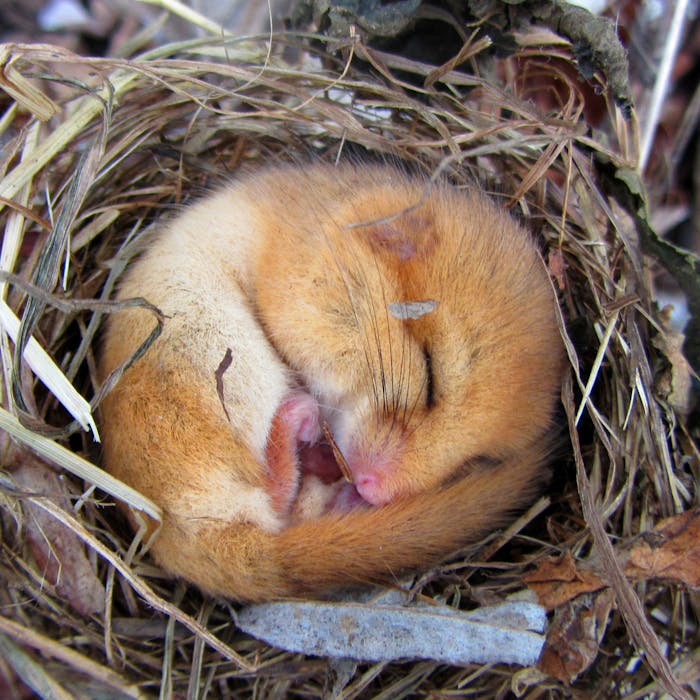
The Dormouse - irresistably cute but endangered
Who can resist the delightful hazel, or common dormouse? Sadly hazel dormice are rare and vulnerable to extinction in the UK, due to habitat fragmentation and changes in woodland management.
Dormice have a body length of just 6–9cm with soft golden-brown fur, big black eyes and a long, feathery tail. They weigh no more than 40g and are at their heaviest just before hibernation.
Dormice occur mainly in southern counties, especially in Devon, Somerset, Sussex and Kent. There are few recorded localities north of the Midlands, though they are present in parts of the Lake District and in scattered Welsh localities. The dormouse is found in deciduous woodland and overgrown hedgerows, and is a nocturnal animal. They are, indeed, sleepy creatures, and spend up to three-quarters of their lives asleep. They live about five years.
They have sometimes been found asleep in old bird nests but they weave their own nests (often in brambles or other shrubs) from strips of honeysuckle bark or a similar plant, surrounded by a layer of green leaves. When conditions are cold or wet, or if food is scarce, dormice curl up into a ball and go into a state similar to hibernation for a short time in order to save energy. Between October and May dormice hibernate in nests beneath the leaf litter on the forest floor or in the base of hedgerows.
Attempts have been made to save this rare creature from extinction in the UK and reintroductions of captive-bred dormice have taken place in suitable woodland. In the last 25 years, 1,000 hazel dormice have been released back into 12 English counties in an effort to rebuild lost populations.
Despite this hazel dormice have declined by 51 per cent since 2000 and considered extinct in 17 English counties.
Further reading
Links to external websites are not maintained by Bite Sized Britain. They are provided to give users access to additional information. Bite Sized Britain is not responsible for the content of these external websites.
